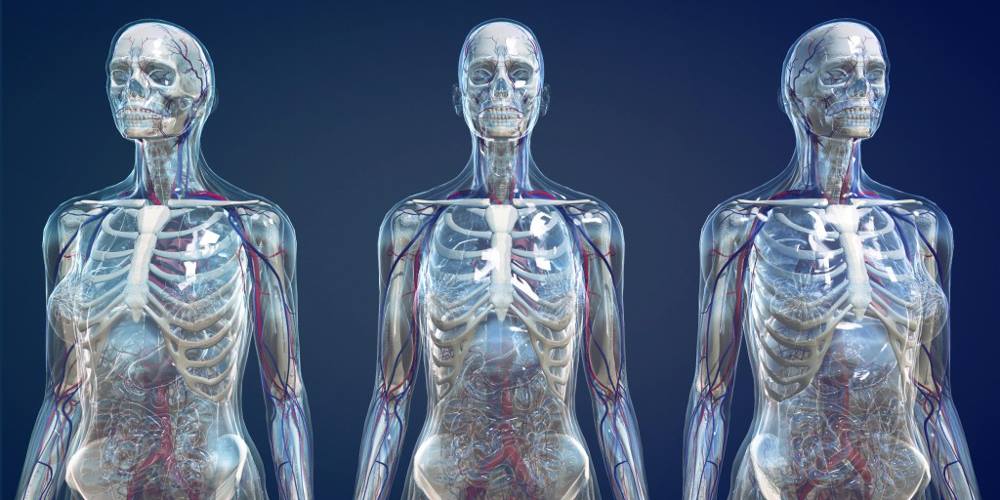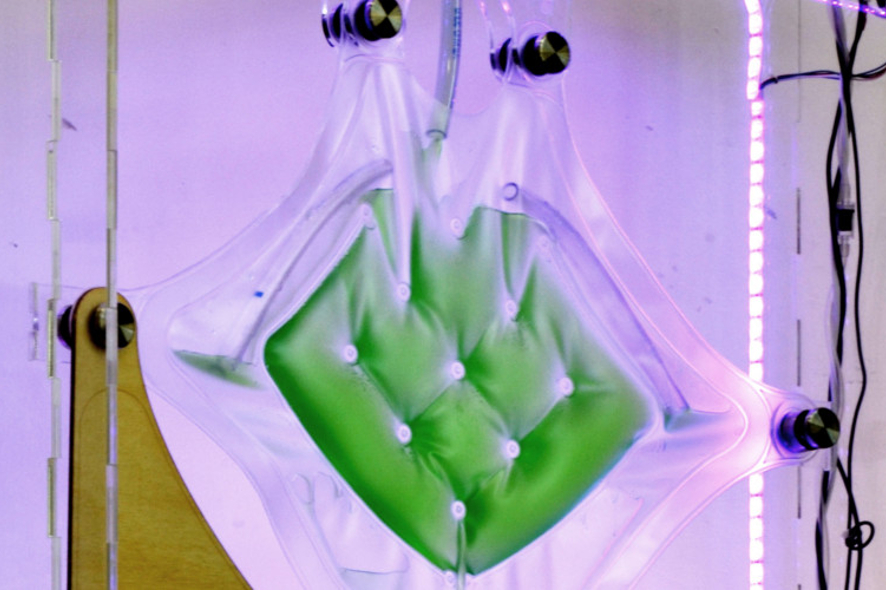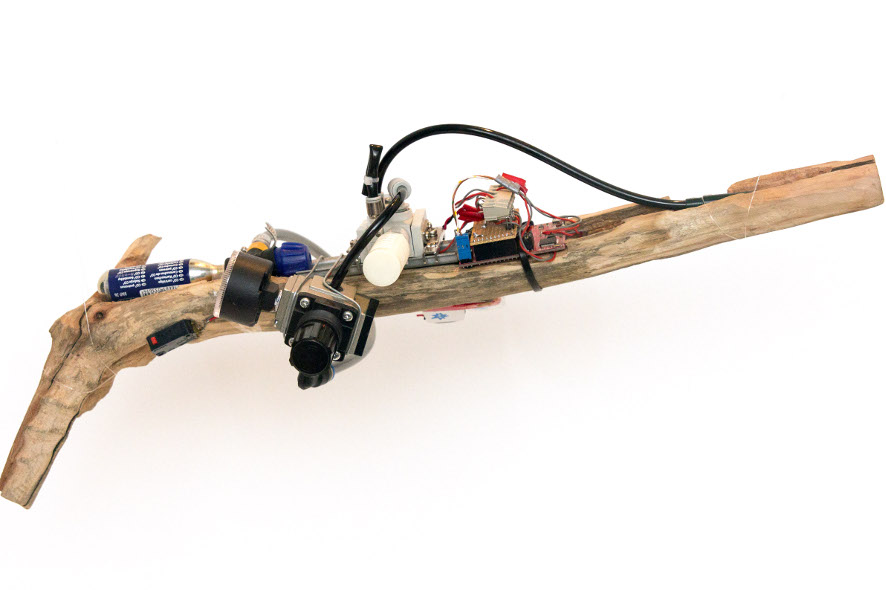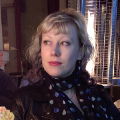The Ars Electronica Futurelab is actively recruiting artists with visions of new technologies in the areas of health, medicine and wellbeing. In this interview, Claudia Schnugg, Senior Curator of the Ars Electronica Residency Network, explains what this Open Call for participation in the EU’s Sparks project is all about, how you can get involved, and what awaits the selected artists during their residency at the Ars Electronica Futurelab. Apply now! The application deadline has been extended to September 30th.

An example for a project, that combines art and medicine: Holoman by Ars Electronica Futurelab (Credit: rubra)
Hello Claudia! Tell us, what exactly is Sparks?
Claudia Schnugg: Sparks is a project financed by the EU’s Horizon 2020 program. The participants—research institutions, museums, and science education facilities such as science galleries and science shops—are from all over Europe. Sparks’ mission is to communicate to the general public throughout Europe two of the European Union’s highest priority messages: on one hand, demonstrating the possible applications opened up by new technologies in the field of health, medicine and wellbeing, and their potential impact in people’s everyday lives; on the other hand, getting across the idea of responsible research & innovation (RRI). To accomplish this, the participating organizations are creating a traveling exhibition that will be running in 28 EU-member states and Switzerland, and appearing at 230 events such as science cafés, scenario workshops and hackathons.

Who can submit proposals in response to the Open Call?
Claudia Schnugg: We’re looking forward to receiving submissions from artists with a wide variety of substantive approaches. The important thing is that the artists are in a position to use new media and technologies to develop tangible objects with which they can visually manifest content in an impressive way. The choice of media and technologies is left up to the artists/applicants themselves; nevertheless, they ought to be capable of working with them independently.
Furthermore, the artists should be interested in the topics that make up Sparks’ agenda as well as working together with the scientists and futurologists on the Futurelab’s staff. In any case, the focus will, of course, be on the applicant’s approach to the theme.
We’re also looking forward to receiving proposals in which the artist demonstrates that he/she already has a certain amount of background knowledge and experience in this area. This could take the form of particular expertise in the medium employed, or even previous ideas that they’ve already worked on with scientists in this general field and that are promising candidates to be developed further in conjunction with Sparks. Accordingly, we would be pleased to consider applications from duos (an artist and a scientist) as well as artists who usually work together as a group of two or more.
E.Chromi (2009) by Alexandra Daisy Ginsberg (UK), James King (UK) & the University of Cambridge iGEM 2009 team for example
What are examples of new technological developments in the area of health, medicine and well-being?
Claudia Schnugg: New technologies are in use in a wide variety of areas. This isn’t solely the purview of high-tech medical labs, the bio-modifications performed by geneticists, or the equipment utilized in intensive care units; many of these developments are already in use in people’s everyday lives or are helping patients on a daily basis.
The first example is the use of big data and personal logs as a basis for the computation of important information to support individual health maintenance, as well as to manage inoculations and limit the spread of epidemics and other global threats. Techniques to gather all these data via apps or wearable devices cause minimal modifications in individuals’ everyday routines but they can enhance people’s quality of life or even save lives. E-coaches and apps designed as games meant to improve an individual’s fitness also fall into this category.
A second example entails specific devices, modifications and implants being used on an experimental basis to treat psychological illnesses and to enhance a subject’s mental efficiency.
A third category consists of innovative interfaces that support patients as well as healthy users in dealing with medications as well as nutritional issues and everyday health maintenance activities—for instance, prototypes of thought-controlled prostheses designed to help overcome phantom pain. Experiments are also being conducted on various wearables and interfaces installed directly onto a subject’s skin as a means of controlling various devices. In this year’s competition to determine the recipient of [the next idea] voestalpine Art and Technology Grant, Brazilian artist & interface designer Katia Vega was awarded an Honorary Mention for a project in which she works with conductive paint and thereby mounts controllers for diverse interactions right on a subject’s body. Such approaches offer solutions for patients with locked-in syndrome, since they enable them to utilize these technologies simply by blinking and moving their eyes.
Mention also has to be made of ways of interacting with caregiver robots. There are several such devices on display at the Ars Electronica Center, some of which have been in use for quite some time—for example, Paro, a robot that resembles a baby seal and is capable of learning. Developed in 2003, Paro has been in use in Japan and Europe to provide therapy for Alzheimer patients. Another major topic in this area is the development of robotic nurses that can be used to care for bedridden patients at home or in the hospital.

LillyBot 2.0 (2014) by Cesare Griffa (IT)
Who selects the winners of the Open Call?
Claudia Schnugg: The submissions will be presented to the members of the Sparks consortium at a meeting on October 8th in Amsterdam. The choice of the three winners will be made by a jury consisting of representatives of those partner institutions responsible for the substantive and artistic elements of the exhibition — Ars Electronica, Science Museum London and the Amsterdam Institute for Global Health and Development/Amsterdam Health and Technology Institute (AIGHD/AHTI).

Gene Gun Hack by Rüdiger Trojok (DE)
What can the winners look forward to during their residency at the Ars Electronica Futurelab?
Claudia Schnugg: The plan is for the participating artists and scientists to develop the exhibition’s installations collaboratively with members of the Ars Electronica Futurelab’s staff. What we hope will emerge is a shared, hybrid way of working. Now, each artist’s Residency proposal should by all means highlight his/her specific interests and background; nevertheless, the actual process of developing the works of art should definitely be open to inputs from the respective scientific fields as well as mentoring and ideas contributed by futurologists on the Ars Electronica Futurelab staff. The Ars Electronica Futurelab has already amassed considerable experience implementing projects like this in conjunction with ongoing residency programs conducted jointly with various research institutions such as CERN and the ESO, as well as previous projects like Studiolab and the Connecting Cities Research Residencies. Accordingly, we’re approaching this collaboration with utmost confidence that the science will be state-of-the-art and the art will contribute to enlightenment!
The Sparks traveling exhibition will go out on tour in June 2016. The first stop on its itinerary is Science Museum London. Beginning in July 2016, it will constantly be running simultaneously at four locations in Europe for two months at a time. The artists, scientists and Ars Electronica Futurelab staff futurologists have until December 2015 to collaboratively develop a working concept or a prototype. Of course, the artists-in-residence don’t have to spend the entire time in Linz, but there will be a joint development phase lasting about 2-3 weeks. The duplication and completion of the works for the four clone exhibitions then has to be wrapped up by May 2016.

Metabodies by Sonja Bäumel (AT) and Manuel Selg (AT)
Can you already give us any more details about the traveling exhibition set?
Claudia Schnugg:
The exhibition will showcase a series of examples of what scientific research and technological development are dealing with today in the areas of health, medicine and wellbeing, and how they’re responding to the needs and interests of the various stakeholders. AIGHD and its spinoff AHTI are already at work on the relevant scientific content of the exhibition, and Science Museum London is currently developing the exhibition design.
The exhibition’s theme will be the influence of technologies on the respective areas of health, medicine and wellbeing, and elaborate on the examples cited above. At each stop the exhibition makes, interactive, participative events will be held to more effectively get across the subject matter to the general public, and local material will be integrated to make the content more vivid and easier to grasp. The Ars Electronica Futurelab and the three selected artists will be responsible for the artistic contributions and the depictions of future prospects that could soon be emerging. Over the course of the project, the Ars Electronica Center will exhibit the Sparks artworks and organize ancillary educational events in conjunction with the show.

As Senior Curator of the Ars Electronica Residency Network, Claudia Schnugg is responsible for the artistic contributions to the Sparks project, which the Ars Electronica Futurelab will produce jointly with the artists and scientists selected for residencies. As Senior Researcher with an interdisciplinary academic background, she is also interested in artistic-scientific collaboration.
You’re invited to apply for a residency at the Ars Electronica Futurelab! This could be your big chance to realize an artistic vision having to do with health, medicine and wellbeing, and to receive support from the Ars Electronica Futurelab’s staff in bringing your idea to fruition. The application deadline is September 30th! Apply here: https://ars.electronica.art/sparks/
